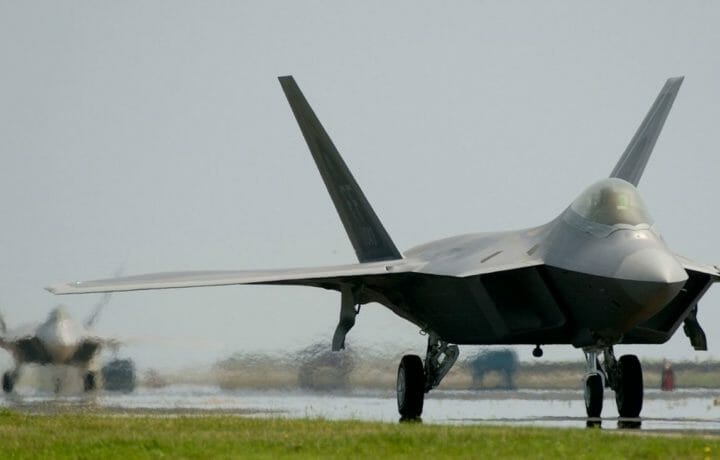Aerospace giant Lockheed Martin is the only U.S. defense firm to be the lead contractor on a “fifth-generation” aircraft. In fact, Lockheed Martin developed both the F-22 Raptor and the F-35 Lightning II, with the latter being the most successful fifth-gen multirole fighter in service with more than 1,100 delivered globally.
The United States Navy announced that the F/A-XX program — its effort to develop a next-generation carrier-based multirole fighter — is now down to a “dogfight” between Boeing and Northrop Grumman. The new aircraft will eventually replace the Boeing-made F/A-18E/F Super Hornet, the modernized version of the McDonnell Douglas F/A-18 Hornet.
In addition, last month, Boeing was awarded the U.S. Air Force contract to develop and produce the manned fighter that is the main system of systems of the Next Generation Air Dominance (NGAD) program. Dubbed the F-47, it will be a sixth-generation fighter that will be supported by unmanned aerial vehicles now being developed as part of the Collaborative Combat Aircraft (CCA) program.
Lockheed Martin Makes a Pivot
Lockheed Martin had been a contender in both the F/A-XX and NGAD programs, but it has announced it won’t contest its elimination from the Air Force contest. Instead, Lockheed Martin CEO Jim Taiclet suggested that the company will introduce some of the technology it developed for the NGAD on an improved F-35, resulting in what Taiclet said would be a “fifth-generation-plus” aircraft. The description was likely meant to differentiate it from the Boeing designation for its F-15EX Eagle II, which was marketed as a 4.5-generation fighter.
In an earnings call last week, Taiclet put a focus on the selling points of a fifth-generation-plus fighter, suggesting it could offer upwards of 80% of the capability of the F-47 but at “half the price.”
“There are techniques and capabilities … that were developed for [our NGAD bid] that we can now apply here,” Taiclet told analysts in the call. “We’re basically going to take the [F-35′s] chassis and turn it into a Ferrari.”
He continued the comparison to racecars, stating, “It’s like a NASCAR upgrade, so to speak, where we would take the F-35 [and] apply some of those co-funded technologies both from NGAD and the F-35 program.”
It is unclear what technology could be included, but there is speculation it might involve improved passive infrared sensors, which would allow the F-35 pilot to detect potential adversaries at a far greater distance without exposing the Lightning II’s location. Moreover, the improved stealth technology that was developed for Lockheed Martin’s NGAD prototype could make its way to improved F-35.
“My challenge here on my aeronautics team is, let’s get 80 percent of six-gen capability at half the price. And that’s something that — these are engineers, you know, they wouldn’t have agreed to this if they didn’t think there was a path to get there,” Taiclet added.
Improving the Best?
Lockheed Martin has already sought to provide advanced features with its F-22 Raptor, which have included the TacIRST infrared search and track (IRST) sensors, which could be essential as stealth fighters from potential U.S. rivals enter service.
Last year, RTX Raytheon was also awarded a $1 billion contract to provide the F-22 fleet with a sensor upgrade. The Pentagon hadn’t specified what the RTX Raytheon contract would include, but there had been speculation it could be the latest Infrared Search & Track (IRST) sensors that were confirmed in the fiscal year 2025 (FY25) budget request for the Raptor.
These advancements will ensure that the F-22, which was developed before most Americans even had a home computer, remains combat effect as more advanced aircraft enter service.
What Does the F-35 Upgrades Mean for Foreign Military Sales?
The F-35 could receive even more sixth-generation enhancements, but a question is whether those features will be offered to only the United States Air Force, or if they’ll find their way to aircraft offered via the Pentagon’s Foreign Military Sales (FMS).
First, President Donald Trump has suggested that a “toned-down” Boeing F-47 could be offered to U.S. allies and partners, but he also noted, “someday maybe they’re not our allies, right?”
Thus, while Taiclet has said the improved F-35 could be offered to foreign buyers, he acknowledged Washington will have the final say.
“Our goal is to make as much of this capability that we can [export],” Taiclet said, while adding, “We try to design [technology] in a way that’s hopefully an easier decision for exportability than a harder one.”
The final question will be whether America’s allies will want to buy what could describe as the “F-35 Basic” or will opt for improved model if it is available.




